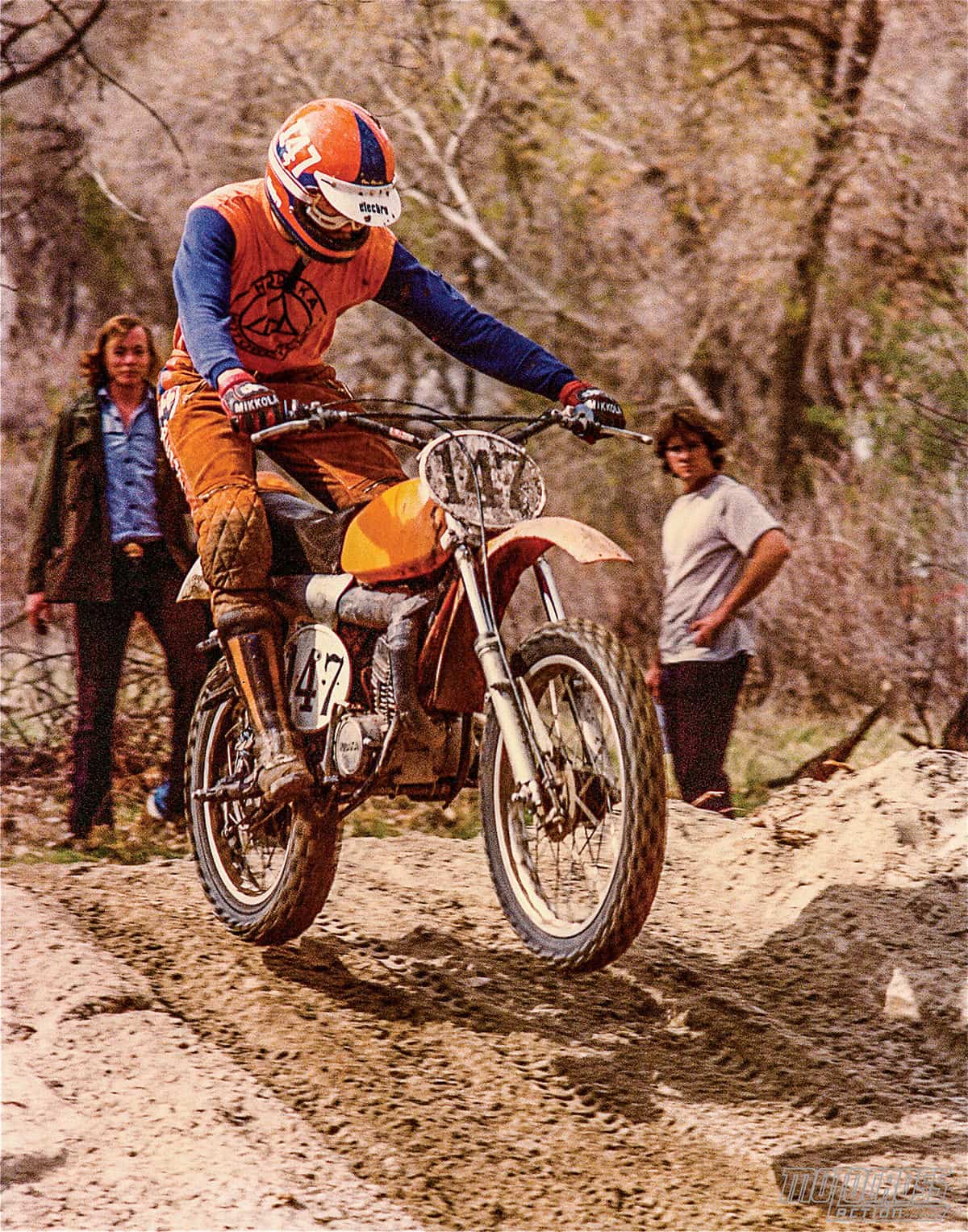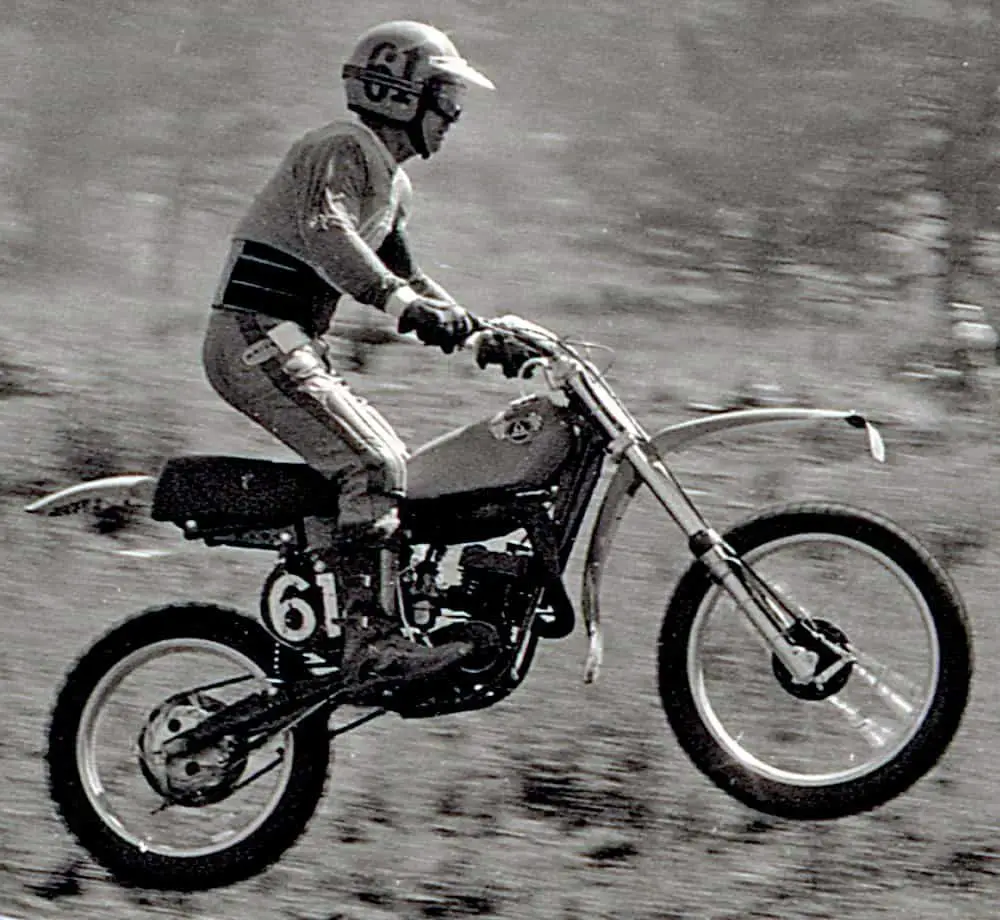FLASHBACK FRIDAY: THE BIKE THAT COULD HAVE SAVED HODAKA

Hodaka was a strange but successful marriage of sorts between Hodaka in Nagoya, Japan, and Pabatco in Athena, Oregon. Pabatco was the acronym for the Pacific Basin Trading Company. As a trading company, it was always on the lookout for a dirt bike that would appeal to the rugged individuals of Oregon and points East. The company had tried importing Japanese Yamaguchis and British Cottons before it came upon the idea of designing its own bike. And since Hodaka had built the engines for the now-bankrupt Yamaguchi firm, Pabatco made a deal with them to build the trail bikes that Pabatco wanted. In 1969, the original Hodaka Ace 90 was renamed the Super Rat, and the little 100cc motocross bike spawned a whole generation of dirt bike riders, including Tommy Croft, Brad Lackey, Jim Pomeroy, Tom Rapp, Harry Taylor, Jody Weisel, Gary Bailey, Don Castro, Mark Blackwell, Kenny Roberts, Chuck Sun, Jack Morgan, Gene Cannady, Sue Fish and Brian Myerscough.
The suggested retail was well under $500, and the chrome-tanked machine packed starting lines across the country. It was perfect for the dirt bike mania that swept America in the early 1970s. Hodaka was selling more dirt bikes back in 1971 than Honda sells today.
But, Hodaka was destined to fail. Although the Super Rat was an amazing success story, the little company in Oregon couldn’t keep up with the rapid changes in motorcycle technology. By 1975 the wind had gone out of its sails. In desperation, Hodaka prototyped one last 125cc bike. This is the story of the bike that could have saved Hodaka by the man who raced the prototype, Bob Rutten.

“The photo at the top was shot at the 1975 Soboba Grand Prix. It was an awesome race held every year at the Soboba Indian Reservation in Southern California. It seemed like it rained every year, which made for perfect conditions. I was first in the 125 Expert class that year.
“This Hodaka prototype was incredible to ride. I don’t know who ported the cylinder, but combined with the special pipe, which I was told had the same cone sizing as the pipes that were used on the Yamaha TZ250 road racer, that bike screamed. It had much more power than any 125 I had ridden up to that point, including the new Honda CR125 Elsinores. That power would have been hard to handle with the old Hodaka frame and suspension, but not on this bike. The way it worked with the cantilevered shocks and the beefier and more rigid forks made me feel there was no limit to how fast I could ride it. It was inspiring. When I first saw the bike, it looked like it was a near copy of the then-very-good Husqvarna 250CR desert bike.
“At that time I was riding for Tiger Distributing in Glendale, California, the West Coast Hodaka distributor. I am not sure how the bike got to them, although I believe Daryl Meter, who worked at Tiger as the parts manager and had a ton of enthusiasm for my desert racing efforts, had heard about the prototype and pushed hard to get it down here for me to try.
“I didn’t have direct contact with Pabatco in Oregon. My input and opinions would go to Daryl and Mike, the overall manager of Tiger Distributing. They would then relay the information to the guys in Oregon. I had the bike for about three months. During that time I had some wins but also some DNFs due to engine failures, mainly lower-end rod failure. I really didn’t want to give the bike back; it was so fun to ride. Every week Daryl Meter and I would discuss how the bike performed and what parts to replace. I would do all the work on the bike.
“If you remember at that time, 1975, Hodaka was losing ground quickly against the new Honda Elsinore, the Yamaha YZ and the Suzuki. I felt that if Hodaka had made a production bike that would run and handle like the 125 prototype did, Hodaka would have continued to be a force in the 125 class. The bike never saw production and Hodaka shut down.”





Comments are closed.